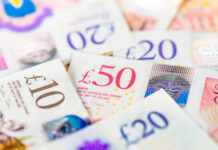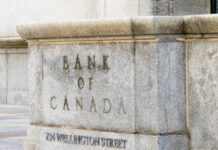To start we have some breaking news from Japan, where it appears that former Japanese Prime Minister Shinzo Abe has been shot while making a speech in the city of Nara. Mr Abe is being rushed to hospital as I write apparently. As we wait for more details to unfold, there have been some noticeable impacts on Japanese markets. The Nikkei 225 has unwound all its early rally, falling to unchanged. Meanwhile, some Yen haven buying is going through forex markets, pushing USD/JPY down 0.40% to 135.40. Still, it’s only money, and my thoughts are with Mr Abe and his family at this time.
Elsewhere, we saw recession fears ebb on Wall Street overnight once again, with stock markets racing to price in a lower terminal Fed Funds rate because of slower growth, or as I call it, any desperate reason to buy the dip. It came despite a sharp rally in oil markets, where there really is a genuine reason to buy the dip, and despite two Fed officials calling for a 0.75% rate hike this month, pushing US yields slightly higher.
I won’t try to overanalyse it, needless to say, today’s lower terminal Fed Funds buying excuse can just as quickly become tomorrow’s recession/inflation sell-everything move. Readers should resist the temptation to get caught up in the day-to-day noise, it’s an easy way to end up crossing spreads, and get whipsawed, and it is clear that the US equity market has no idea which way the tree will fall either.
One point of volatility this evening is the US Non-Farm Payroll data. The street is forecasting an additional of 268,000 jobs, down from last month’s blockbuster 390,000 print, but still pretty decent. Unemployment is expected to remain steady at 3.650%. The back-month revisions may drive volatility more than the headline and trying to predict the market reaction ahead of time is usually a lose-lose situation, as is trading it in the 30 minutes after the release as the gnomes go crazy. Given the complacency around the path of Fed rate hikes this week, in the context of an apparently looming recession, my best guess is that a high number will provoke a stock market sell-off. The logic is we were wrong about fewer Fed rate hikes, and better sell equities, especially the Nasdaq. Conversely, a lower number which would point to a slowing economy likely means the gnomes of Wall Street will decide they were right about fewer rate hikes, so buy everything, especially the Nasdaq. Obviously, a recession isn’t a conducive environment for equities either, but why let the detail get in the way of the preferred story?
Other news doing the rounds this morning is that China is considering allowing local governments to bring forward CNY 1.5 trillion ($220 billion) worth of bond issuance from their 2023 quotas, into H2 2022. The bonds, which are mostly used to fund infrastructure, would give a healthy dose of stimulus to try and get the Chinese economy back on track to meet those ever-distant 2022 growth goals. In the short term, that should be a positive for China markets, although the price action on Mainland and Hong Kong equity markets is underwhelming. If true, I would say that it isn’t a sea-change approach from China, more an accounting smoke and mirrors. NPV-ing next year’s infrastructure spending into this year would be a nice short-term boost, but if they don’t also increase the 2023 bond issuance quotas as well, net-net, it’s a zero-sum game.
The rest of the day’s calendar in Asia is dull, with a recovery in Japanese Household Spending rightly forgotten after the Abe news. Malaysian Industrial Production and Indonesian Consumer Confidence are unlikely to move the needle. Taiwan Industrial Production will only be interesting if the trade balance retreats sharply, raising Asia slowdown concerns. Europe’s data releases are also strictly tier-2 as well, leaving markets to follow the US overnight lead to some degree, or headline watch until the US Non-Farm data is released tonight.
Asian stocks follow Wall Street higher
Wall Street shrugged off some hawkish rhetoric from the FOMC members’ rent-a-crowd overnight, myopically sticking to a recession equals lower rates equals buy stocks mantra. With nothing else to shake that tree, I can’t blame them for their enthusiasm. The buy-the-dippers piled into the growth trade, despite oil and US yields rising. The S&P 500 rallied by 1.50%, with the Nasdaq leaping by 2.28%, and the Dow Jones gaining 1.12%. In Asia, some profit-taking is occurring, pushing futures on all three indexes down by around 0.20%.
In Asia, the Abe shooting wiped out the early rally by the Nikkei 225, which is now unchanged on the day. South Korea’s Kospi has also given back some gains but remains 0.85% higher. Mainland China has barely reacted to either Wall Street overnight, or the China bond issuance story. The Shanghai Composite and CSI 300 are up just 0.20%, while Hong Kong’s Hang Seng Index is just 0.40% higher.
Elsewhere, regional Asia is also booking modest gains as markets appear to be more cautious ahead of the US Non-Farm data tonight and the usual weekend event risk. Singapore is 0.30% higher, with Taipei rising by 0.75%, Kuala Lumpur by 0.50%, and Jakarta by 0.70%. Bangkok is flat while Manila has outperformed again, jumping higher by 1.55%. A slight recovery by resource prices overnight, and a strong Wall Street session, see Australia’s All Ordinaries rising by 0.60%, while the ASX 200 has added 0.35%.
European markets had another day of outsized gains overnight as oil prices slumped, the Norwegian oil strike was averted, and a slumping Euro boosts the Eurozone’s export prospects. Oil’s sharp reversal higher in New York will limit those ambitions today for Europe, and I am expecting just a modestly positive open as they also wait for the US data. UK equities rose on PM Johnson’s resignation yesterday, but it seems more like a protest vote, and not a structural turn in sentiment.
US Dollar consolidates overnight
The US Dollar consolidated its gains overnight, ranging against DM and Asian currencies. The dollar index was almost unchanged at 107.09, where it remains in Asia. There is barely any movement in Asian forex markets today either, as the region happily slips into wait-and-see mode ahead of the weekend and tonight’s US Data. Overall, the technical picture remains constructive for the dollar index though, although the daily relative strength index (RSI) is flirting with overbought territory, suggesting a temporary downward correction is possible. Having broken out of a 5-year triangle at 102.50 in April, its longer-term target remains in the 1.1700 area. More immediate resistance is at 107.25 and 110.00. Support is at the 1.0585 breakout point, and then 1.0500, followed by 1.0350 and 102.50.
EUR/USD edged 0.23% lower to 1.0160 overnight, where it remains in Asia, as currency markets took a rest from the volatility of the week. Since breaking a multi-year support line at 1.0850 in April, Euro has looked consistently weak, the recovery rally failing ahead of 1.0850 in a technical analysis nirvana. An oversold RSI could allow for a more extended recovery, with resistance at the 1.0300 and the 1.0350 breakout, followed by 1.0600. Support is just below at 1.0150 and then 1.0000.
GBP/USD rallied by 0.85% to 1.2025 overnight as BoJo finally said Bibi. Johnson’s resignations promise more turmoil ahead as there is no obvious candidate amongst the conservatives with a haircut to replace him. As such, I expect Sterling’s strength to be as fleeting as a UK cabinet appointment. Immediate support is at 1.1880 and 1.1800, with 1.1400 the medium-term target. Resistance is at 1.2100 and 1.2200.
USD/JPY was steady at 136.00 overnight as US yields firmed slightly. The Abe shooting this morning pushed USD/JP lower to 135.35, but it is already recovering, rising to 135.65. Despite the tragedy of these events, I do not expect them to provide anything but temporary strength. The US/Japan rate differential remains the primary driver of USD/JPY. USD/JPY has resistance at 136.65 and 138.00, with support at 134.25 and 132.00.
AUD/USD and NZD/USD rose mechanically with investor sentiment overnight, both booking decent gains to 0.6840 and 0.6180. AUD/USD has nearby resistance at 0.6850, and NZD/USD at 0.6200. Support is at 0.6760 and 0.6125 respectively.
Asian currencies are treading water today ahead of the weekend and the US data this evening. The overnight session was non-committal, the US Dollar consolidating gains although the Philippine Peso has fallen to 56.00 to the dollar. The juice will be on South Korean, Philippine, Indian, and Indonesian central banks to signal more vigorous rate-hiking ahead, with no sign that the FOMC will blink. Today is likely to be a dull session.
Oil rallies sharply overnight
Oil had another hugely volatile session overnight, with Brent crude and WTI rallying by over 4.0%, reversing the losses of Wednesday. That came despite a huge increase by US official Crude Inventories by 8.235 million barrels. That was a slightly misleading headline though, with the increase aided by disruptions in US refineries. Notably, gasoline inventories slumped by 2.5 million barrels as well. With US refining capacity running at an unrealistic 94.50%, any disruption will impact refined products and backstop WTI, in particular.
Brent crude finished 4.50% higher at 104.25 a barrel, while WTI rallied by 4.15% to $102.20 a barrel. Oil’s rally actually started yesterday as the $100.00 Brent crude proved an irresistible temptation for Asian physical buyers. The slump in US gasoline inventories helped the process along by highlighting how tight supplies remain, especially in the refined categories. Asia has continued buying the dip today as well, perhaps cognisant of weekend headline risk. Brent crude has risen 0.75% to $105.00, with WTI adding 0.50% to $102.80 a barrel.
Brent crude has resistance at $106.00 and then its 2022 trendline breakout at $108.85, followed by the 100-day moving average (DMA) at 110.50. It has traced a double bottom at $98.60, followed by the 200- day moving average (DMA) at $96.35 a barrel. WTI has resistance right here at $102.00 and then it’s 100-DMA at $107.16 a barrel. Support is at $96.60, $95.00, and then its 200-DMA at $93.50 a barrel.
Gold is sideways in Singapore
Without much movement in the currency space overnight, gold remained almost unchanged at $1740.50 an ounce, trading in a narrow range. Asia is equally dull, gold edging lower to $1740.00 an ounce.
Since breaking $1780.00, gold’s technical picture has deteriorated rapidly, and it is clear it remains at the mercy of the US Dollar’s direction. The only positive note to be seen is that its RSI has fallen into oversold territory, allowing for a modest corrective rally to occur. Despite a couple of sessions of sideways trading, gold remains anchored at the bottom of its range and only a miracle slump by the US Dollar this evening is likely to move it off the seafloor.
Gold has resistance at $1780.00, $1785.00, and $1820.00, its downward trendline. Support is at $1720.00, followed by $1675.00. Failure of longer-term support at $1675.00 sets in motion a much deeper correction, potentially reaching $1500.00 an ounce.












